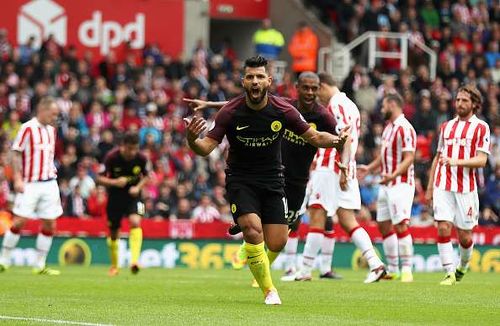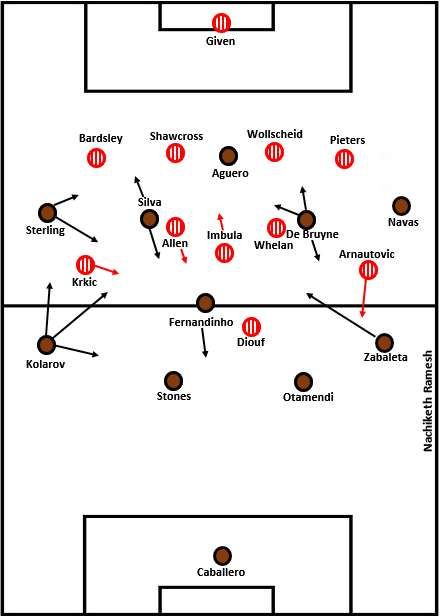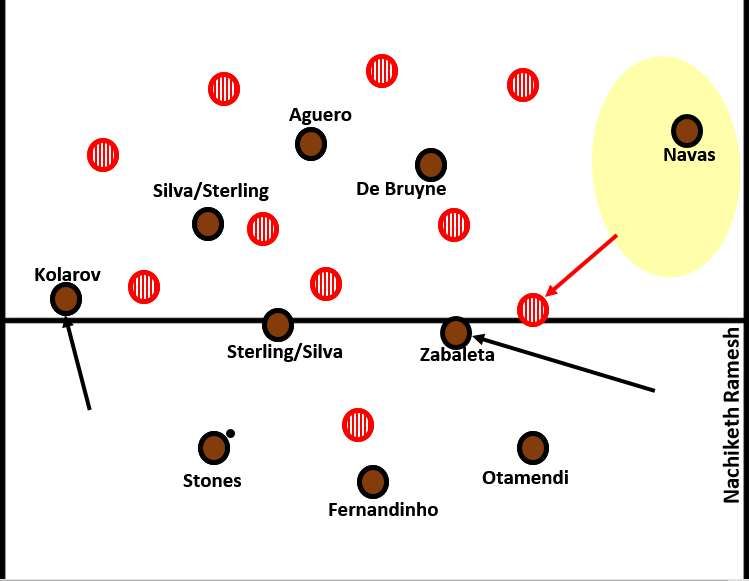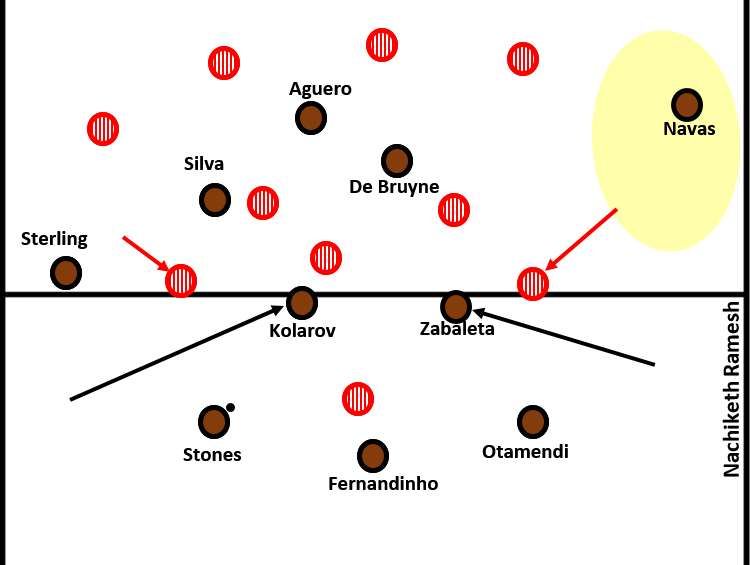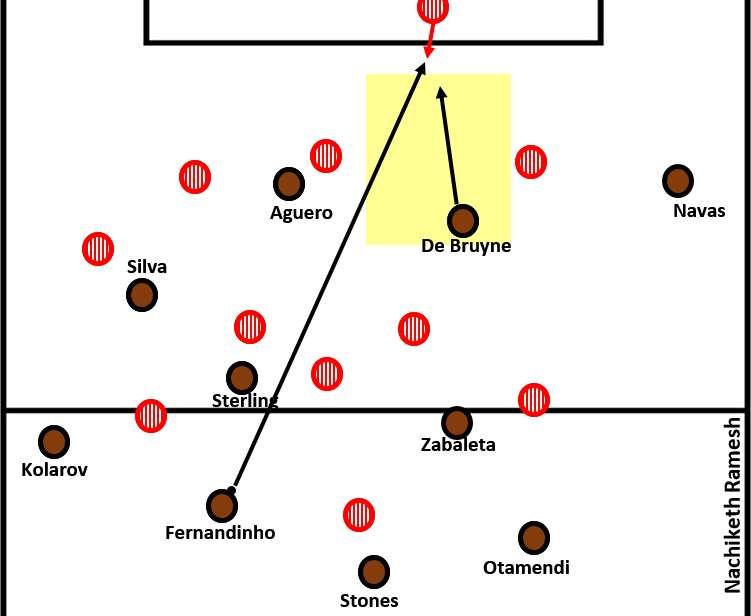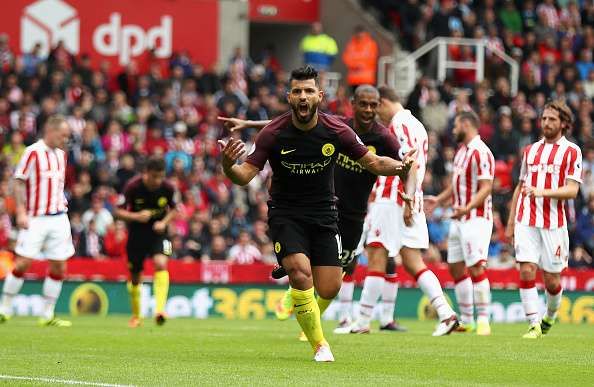
PEP TALK - 05: Stoke City 1-4 Manchester City - Tactical Analysis
Manchester City cruised past the roughest side of Premier League, Stoke City, with a score line of 4-1. Sergio Aguero scored a brace to take his goal tally of the season to six. Nolito also followed Aguero’s footsteps and netted two goals in the closing minutes of the match. Bojan Krkic scored the home team’s only goal of the game.
On a funny note, Pep Guardiola, with this win, has now partly answered one of the most daunting questions posed to him: “Can you do it on a cold, wet, and windy night in Stoke?”
Teams:
Stoke City: Shay Given; Phil Bardsley, Ryan Shawcross, Phillip Wollsceid, Erik Pieters; Glenn Whelan, Joe Allen, Gianelli Imbula; Marko Arnautovic, Mame Diouf, Bojan Krkic.
Manchester City: Willy Caballero; Aleksandar Kolarov, John Stones, Nicolas Otamendi, Pablo Zabaleta; Fernandinho; Raheem Sterling, David Silva, Kevin De Bruyne, Jesus Navas; Sergio Aguero.
Guardiola, like in the previous games against Sunderland and Steaua Bucuresti, went ahead with a 4-1-4-1 formation. Mark Hughes’s Stoke looked like a 4-3-3 on paper. It was more of a 4-5-1 formation than the former.
Since the focus is mainly on Manchester City, the analysis will be 80% aimed at looking at the different mechanisms of Guardiola’s team and only around 20% on the dynamics of Hughes’ Stoke City.
Manchester City’s shape – Situational Inverted or false fullbacks, Sterling the central supporter and Great movements
Guardiola’s team was again changing from a 4-1-4-1 shape to a more flexible back three in a 3-2-4-1 which was also offering City the ability to hold-up the key positions as per the manager’s plan.
3-2-4-1! But that was the same one used against Sunderland last weekend, isn’t it? Partly yes and partly no.
Yes, because it was a 3-2-4-1 against Sunderland.
No, because the players who occupied the positions were different and the movement mechanisms of the players from the original formation to morphed formation were also quite altered.
For example, Sterling started on the left today where Nolito had started against Sunderland. Unlike Nolito, who was moving central in tandem with Silva’s outward runs in the final third and only a few times in the middle third, we saw Sterling getting involved more in the build-up play by moving towards the central regions and helping in providing numerical superiority during the build-up phase.
It was the same with the wingbacks, Kolarov and Zabaleta, and the manner in which they moved and occupied the center. There was a pattern.
Against Sunderland, both Gael Clichy and Bacary Sagna were cutting in towards the center circle during the possession phase of Manchester City. But against Stoke, the wingbacks of City behaved slightly differently.
When the build-up was happening on a particular wing and if Fernandinho was staying ahead of the defenders, City was changing to back three with the ball near side wingback occupying the half-space as a center back. In order to be compact and provide support to receive passes, the far side wingback was moving central and thus, was changing to a false or inverted fullback.
There was another scenario. This was when Fernandinho was dropping to split the center backs, Stones, and Otamendi, during the build-ups. With Stones, Fernandinho, and Otamendi forming the back three, it was up to the near side wingback and winger to decide about the movements. Either the winger was moving in towards the center or it was the wingback, thus becoming an inverted fullback.
The player who was moving central was being joined by either Silva or De Bruyne (depending on which side the build-up was taking place) and by the far side wingback (as an inverted fullback).
This had some advantages. One, as mentioned in the explanation, City was gaining numerical superiority in the middle to pass the ball through the central strip.
The other was, this numerical superiority and accompanying movements of Aguero, Silva, Sterling, De Bruyne, and the wingbacks were dragging Stoke City’s defensive shape towards the wing or half-space where the build-up was taking place. This was freeing up space for the winger on the far side of the field – enabling diagonal balls to be played.
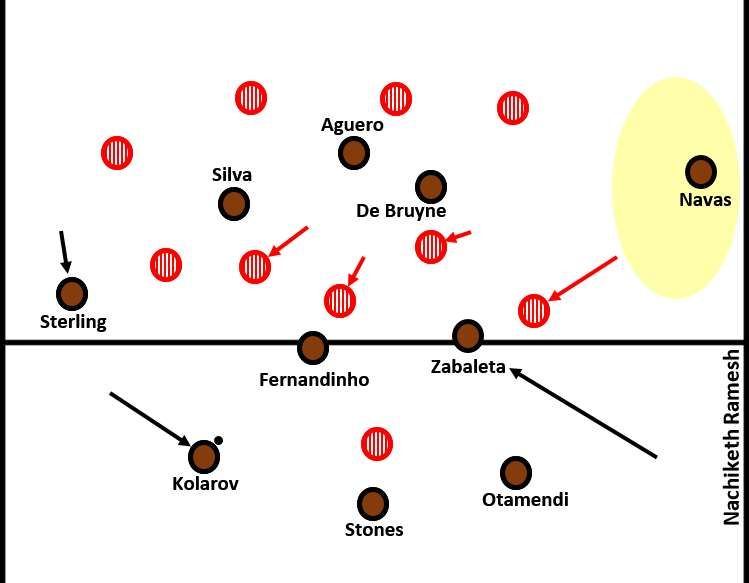
So by flexible movements, City was able to maintain two central players – either in the center or in the half-spaces adjacent to them. Keeping aside the normal numerical advantages and passing options for ball circulation, City players, with their coordinated and almost synergistic in and out movements, were confusing the Stoke defenders.
The right-back, Bardsley, was tracking Sterling whenever the English winger was moving towards the center or dropping deep. Silva, combined with Aguero, was putting the defensive midfielders and the central defender in doubt.
Tracking was the only option for the Stoke players and such actions were exposing the center open for attacks via through balls. Two especially caught my attention – one in the fifth minute and one in the 68th minute – both by Fernandinho and both were as a result of manipulated defensive structure of Stoke City due to Manchester City’s movements.
